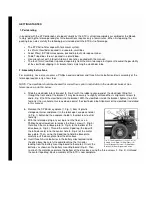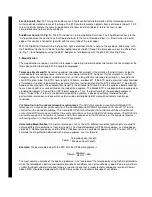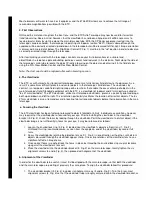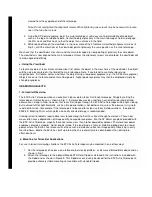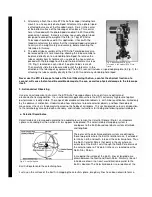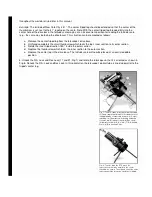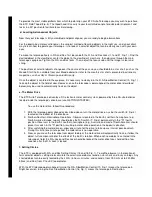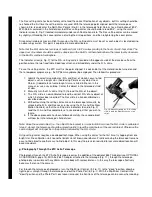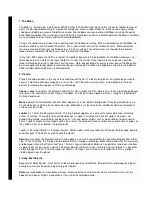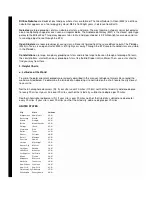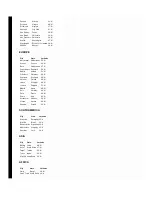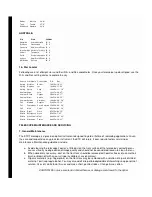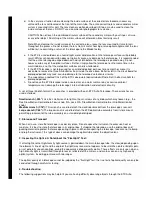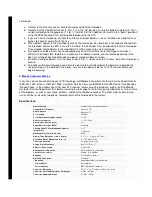
5. Note the dotted line and arrow extending from the telescope tube in Fig.
8. This line defines the telescope's polar axis. Lift the entire telescope,
including tripod, and place the telescope on a tabletop so that this axis is
pointed due North. For example, if you know the location of Polaris, the
North Star, then point the telescope directly at Polaris. (Fig. 9)
Note: Observers located in the Earth's southem hemisphere (e.g., South
America, Australia, etc.) should point the telescope's polar axis due South.
6. From this point on, only move the telescope using the R.A. and Dec
controls. Any other movement of the telescope will nullify the polar alignment procedure.
Polar alignment of the telescope thus requires two procedures: extending the center tripod leg to the correct
latitude position and pointing the telescope's polar axis due North.
The center tripod leg has a latitude range of from 27.5° to 42.5°. Observers located at latitudes higher than 42.5°
may achieve equatorial alignment by placing the center tripod leg in the upper hole position (2, Fig. 3). Polar
alignment may in this way be achieved to latitudes as high as 48°. Note, however, that the latitude scale on the
center tripod leg no longer is valid when the leg is placed in the upper hole position. In this case the center tripod
leg should be extended until the telescope's polar axis points to Polaris, or due North, an alignment obtained by
sighting along the telescope tube with the telescope oriented as shown in Fig. 8.
If the observing location is at latitudes below 27.5°, the telescope can be polar aligned by placing the center tripod
leg in the lower hole position (4, Fig. 3). Again, polar alignment can be obtained by sighting along the telescope
tube, per the orientation in Fig. 8, and extending the center tripod leg so that the telescope's polar axis points to
Polaris. Polar alignment at latitudes as low as 22° may be achieved in this way. If your observing latitude is higher
than 48°, the optional High-Latitude Tripod Leg, is available and allows for polar alignment as high as 66° latitude.
Important note: For almost all astronomical observing requirements approximate settings of the telescope's latitude
and polar axis are acceptable! Do not allow undue attention to precise polar alignment of the telescope interfere
with your basic enjoyment of the instrument.
c. Alternate Polar Alignment Procedure
If desired, more precise polar alignment (particularly if your latitude requires that you use the upper or lower hole
positions, (2 and 4, Fig. 3) for attachment of the center tripod leg) may be obtained by first orienting the telescope
as shown in Fig. 8. Use the R.A. Slow-Motion Control (10, Fig. 1) to move the telescope so that the eyepiece is
positioned as shown in Fig. 8. Then follow this procedure:
1. Align the telescope's optical tube by your eye so that it is parallel to the telescope's center tripod leg. Use
the Dec Slow-Motion Control (16, Fig. 1) to make the optical tube and center tripod leg as nearly parallel to
each other as your eye can detect, as shown in Fig. 8.
2. Lift the entire telescope, including tripod, and place it on the observing table so that the telescope's polar
axis (dotted arrow in Fig. 8) is pointing due North.
3. While observing through the SP 26mm eyepiece of the main telescope, adjust the length of the center
tripod leg until Polaris is visible in the eyepiece. Do not use the R.A. and Dec Slow-Motion Controls.
Instead, use a combination of (a) lifting and turning the entire telescope (or nudging the position of one of
the fixed tripod legs) and (b) adjusting the length of the center tripod leg to place Polaris in the center of the
telescope's field.
Although the above procedure is somewhat tedious (since the actual field of view of the main telescope with the SP
26mm eyepiece in place is only about 1°), it is a worthwhile effort if fairly precise polar alignment is desired (e.g., if
photography of the Moon or a planet is to be performed.) With Polaris placed in the center of the telescope's field,
the telescope will be polar aligned within about one or two degrees - a level of alignment precision more than
sufficient for almost any observing application.
arrow) points due North.
Fig. 9: Locating Polaris
Summary of Contents for ETX Series
Page 20: ......


